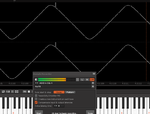Saltwater
Member level 3
Hi,
I was doing some FPGA and was wondering if it's a problem on the FPGA side of things. The calculations are done using relatively high frequency and with a high data bandwith 64bit "large multipliers" and in the 20mHz range. I might have done something wrong with integer calculations..
My question was, is it likely that under some workload a Cyclone 5 FPGA starts to croak, or is it expected to have flawless performance across the board?

Kind regards,
I was doing some FPGA and was wondering if it's a problem on the FPGA side of things. The calculations are done using relatively high frequency and with a high data bandwith 64bit "large multipliers" and in the 20mHz range. I might have done something wrong with integer calculations..
My question was, is it likely that under some workload a Cyclone 5 FPGA starts to croak, or is it expected to have flawless performance across the board?

Kind regards,